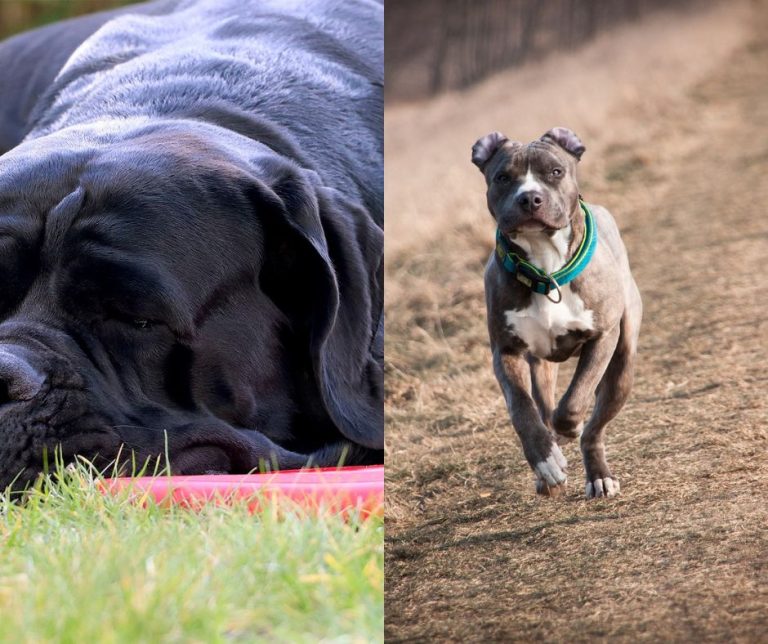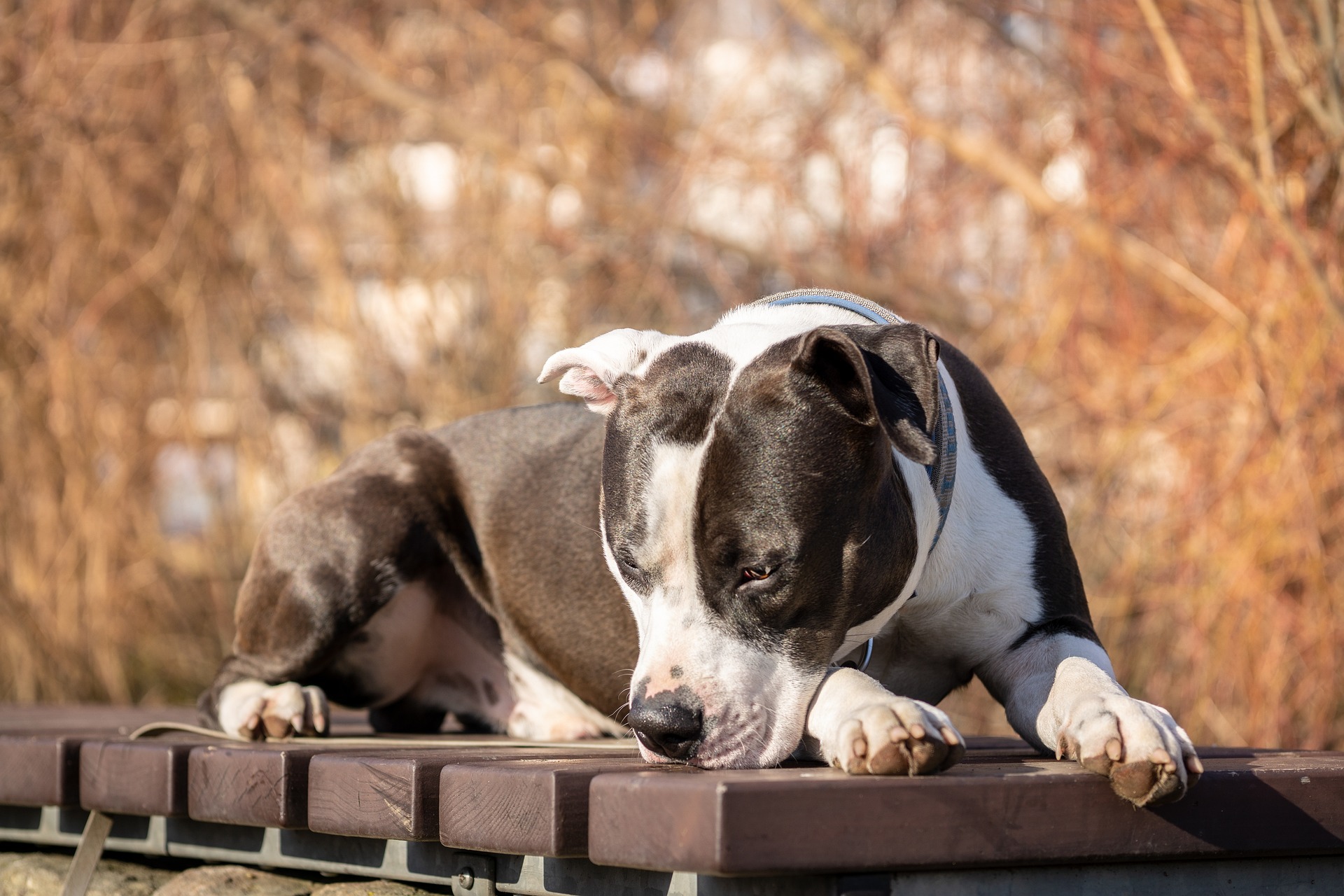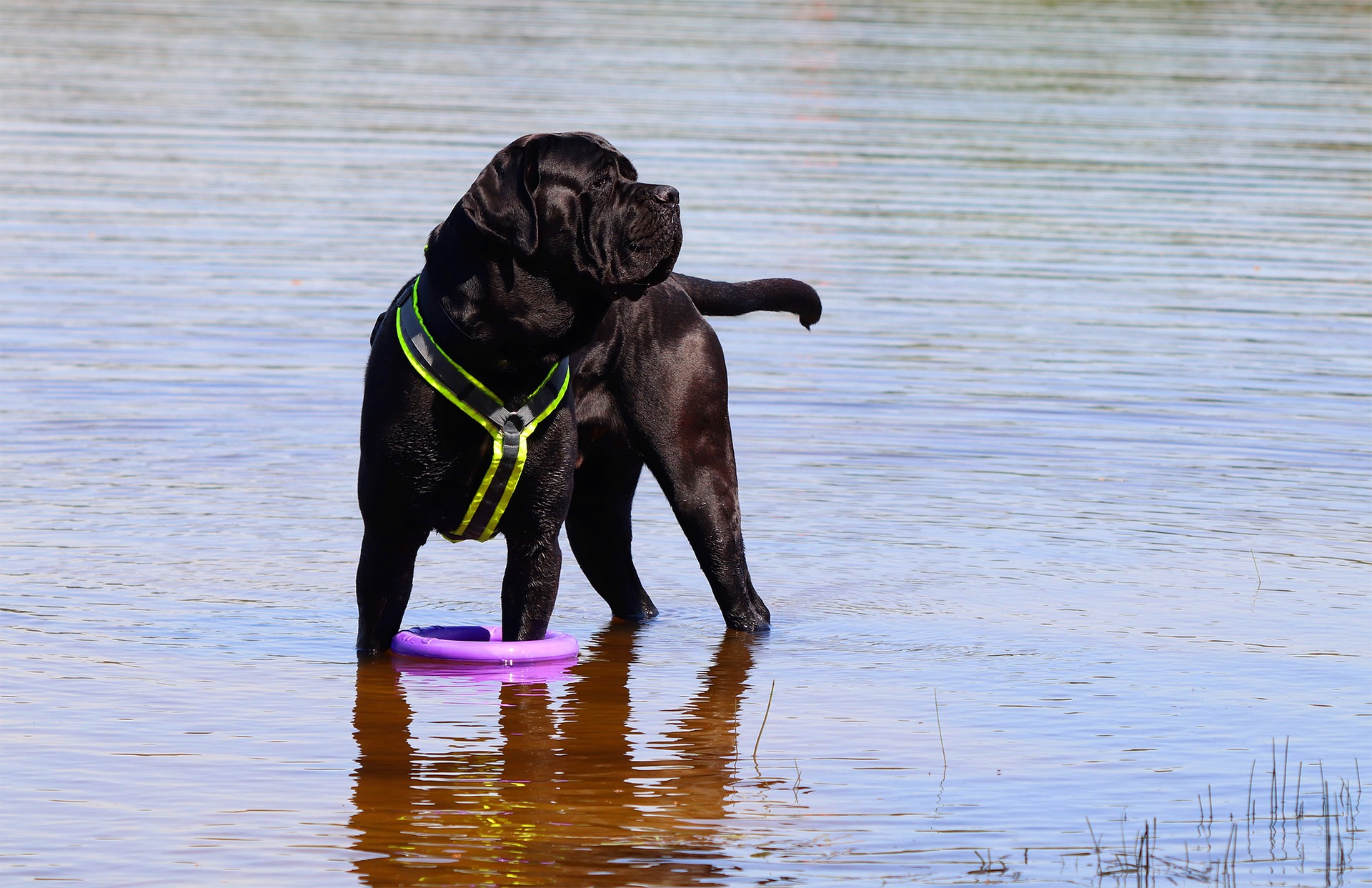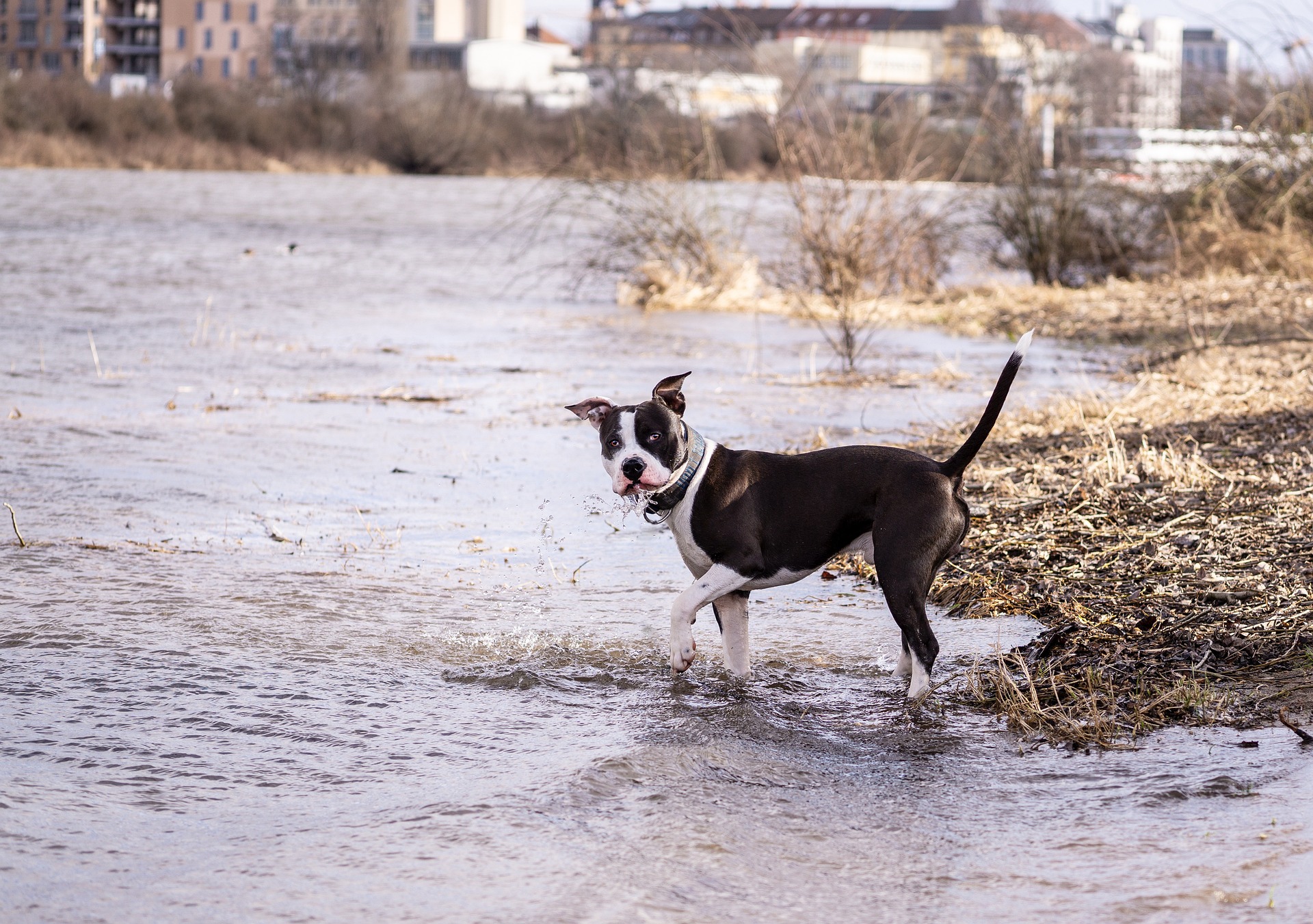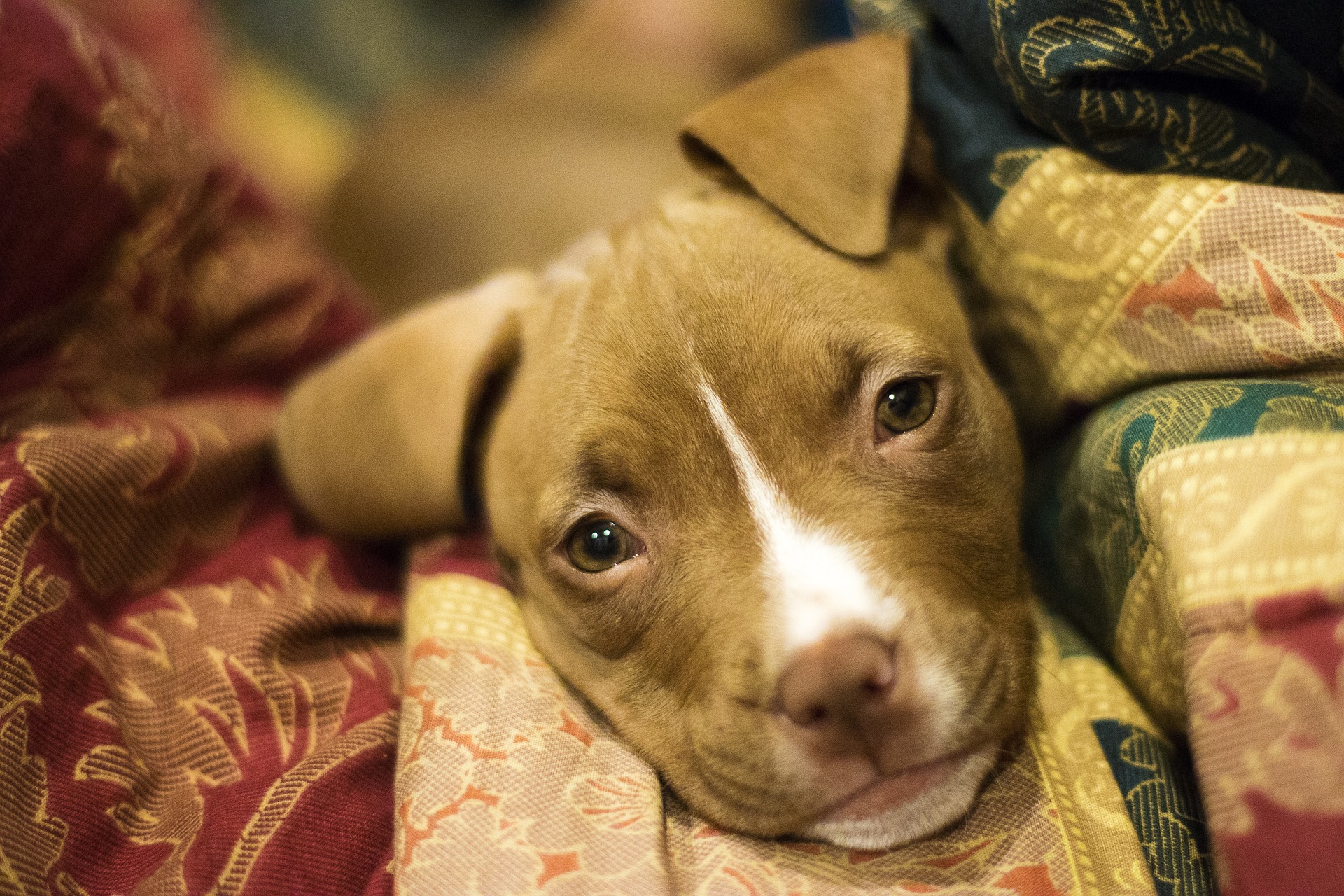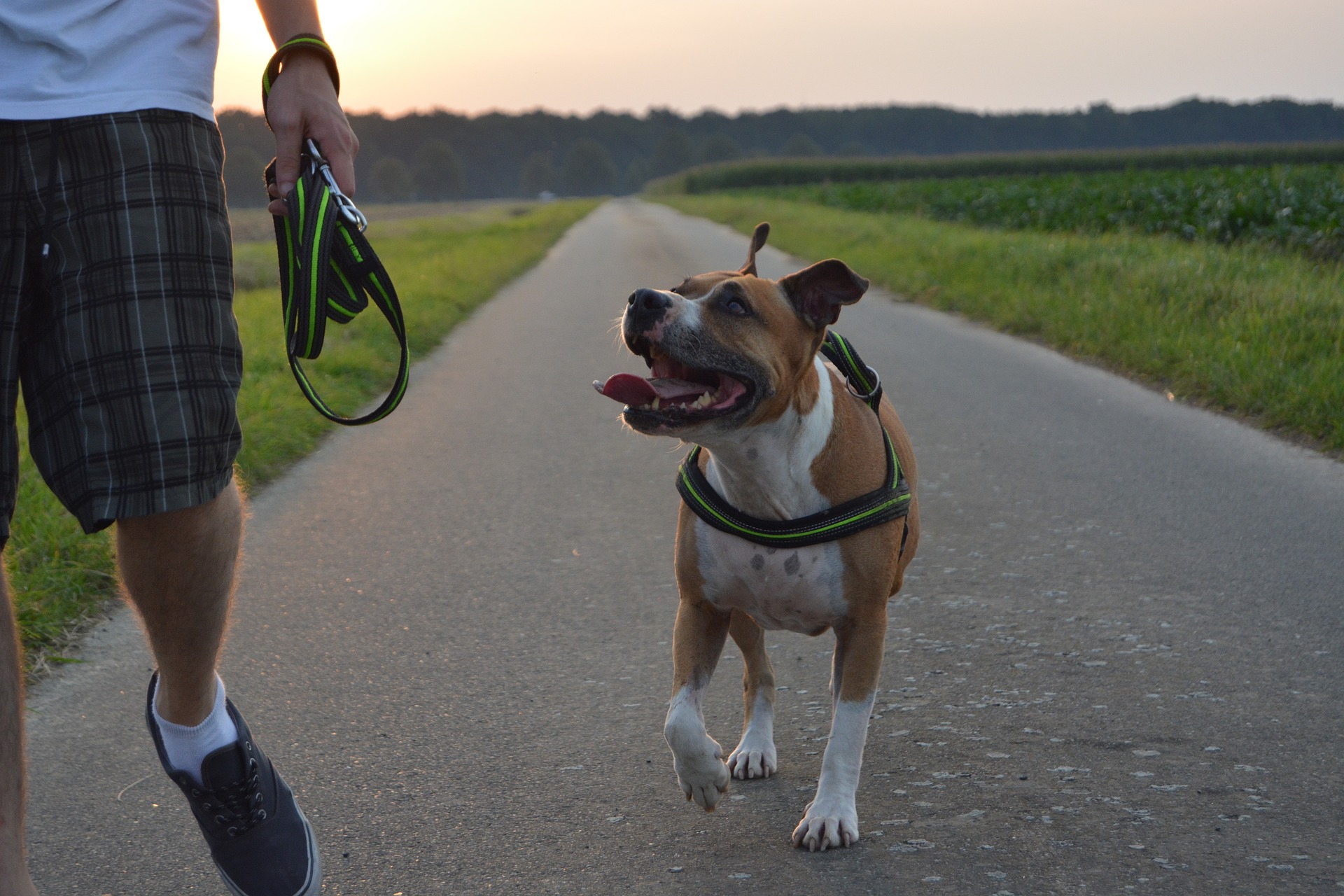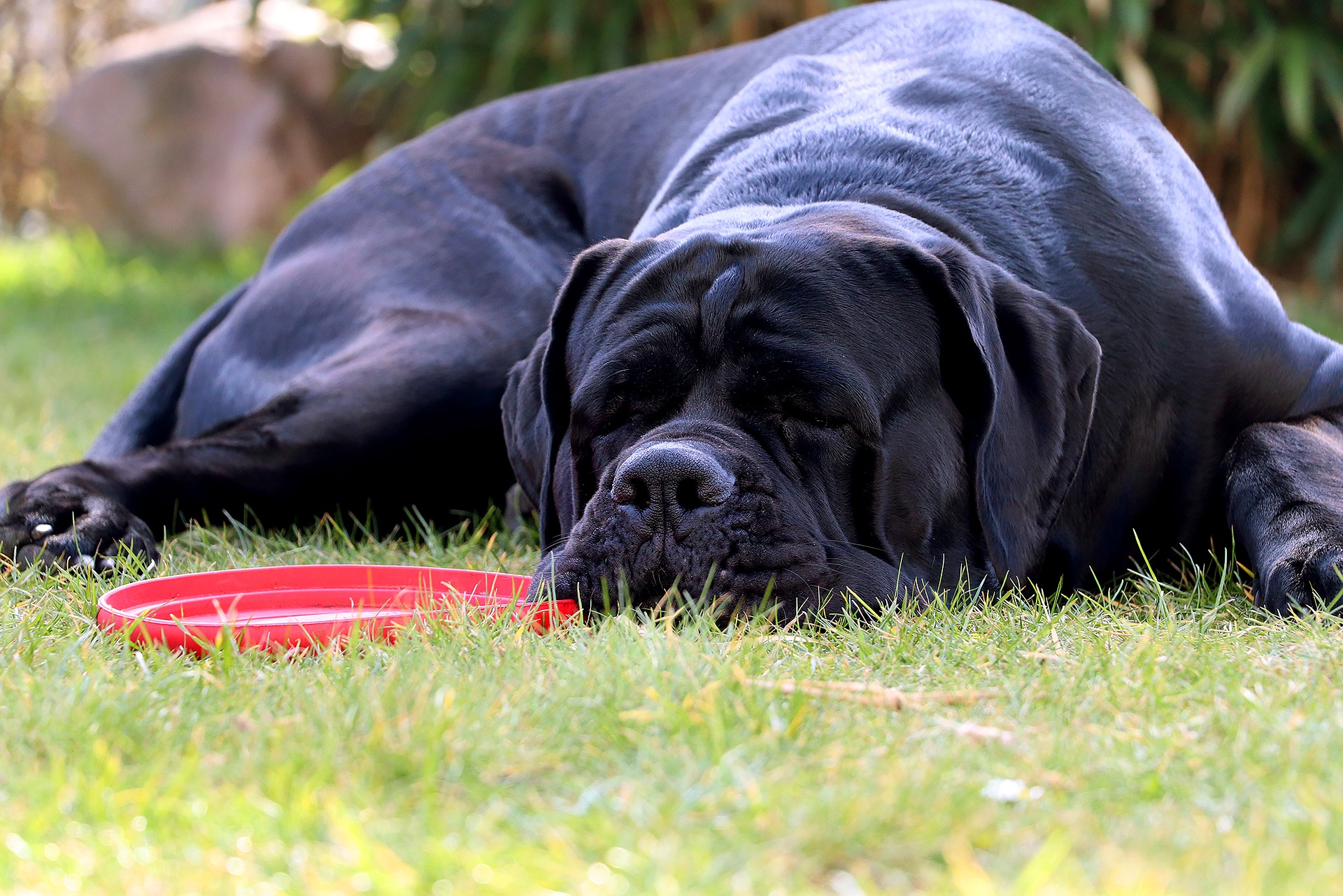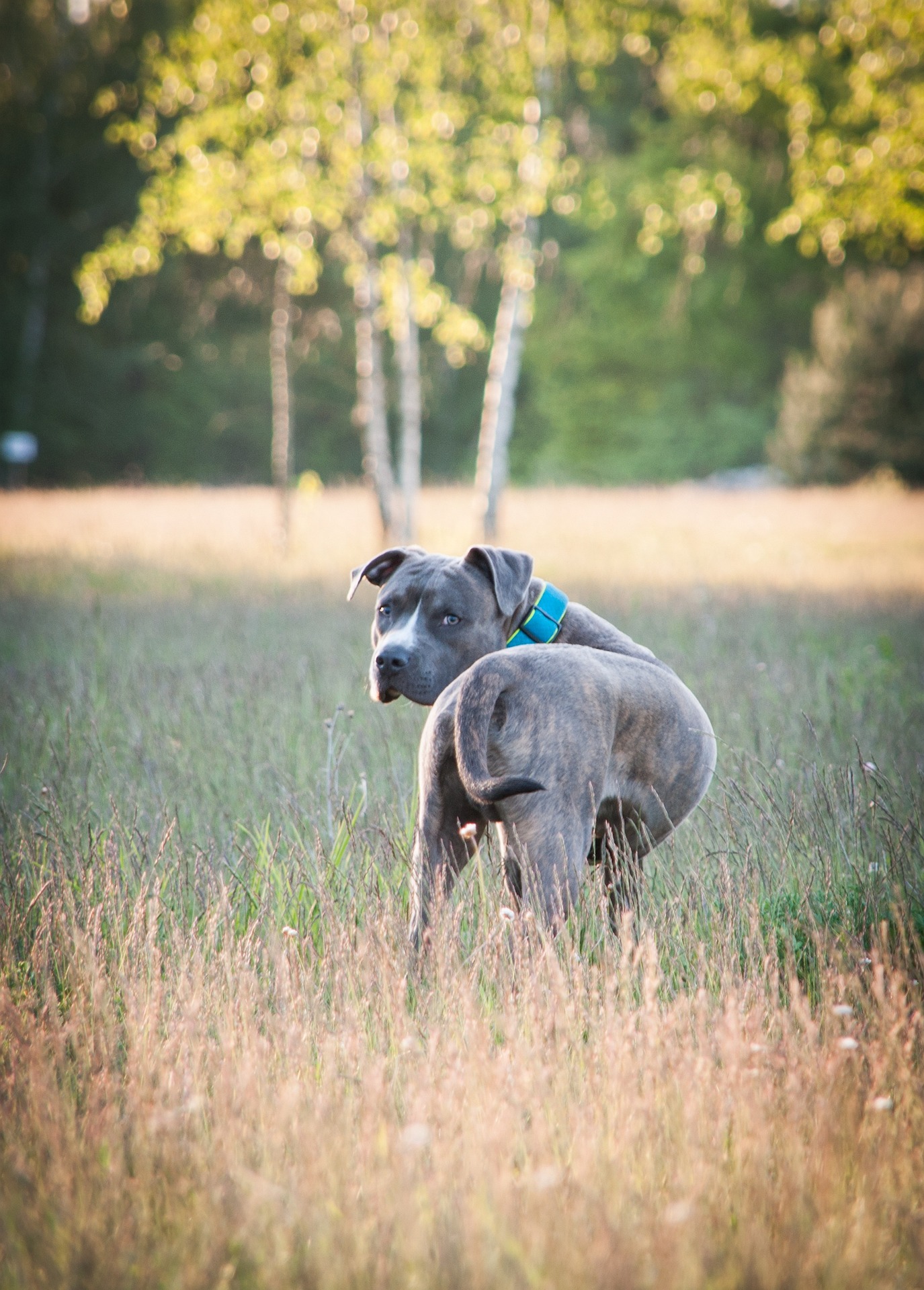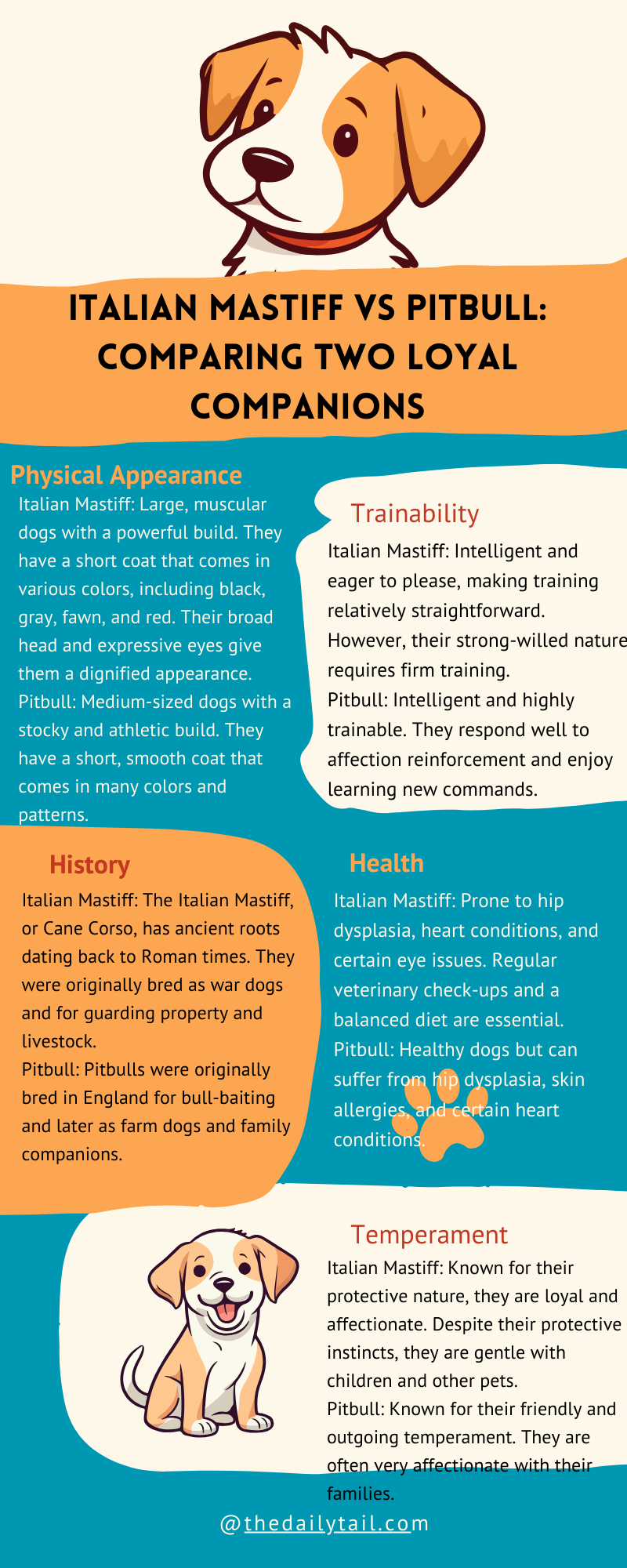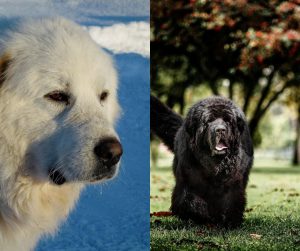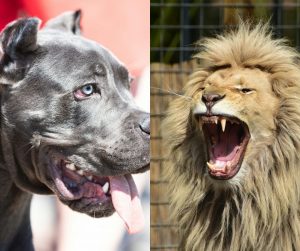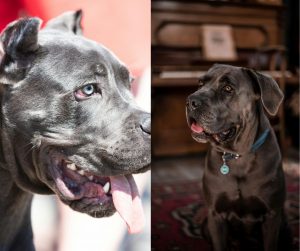When examining dog breeds, particularly the Italian Mastiff, known as the Cane Corso, and the American Pitbull Terrier, commonly referred to as the Pitbull, it is essential to understand their distinct heritage, built over centuries.
The Italian Mastiff, with its formidable presence, traces its lineage back to ancient Rome. On the other hand, the history of the Pitbull is equally rich, although its past is often misunderstood, leading to a variety of misconceptions about the breed.
In terms of physical attributes, the two breeds exhibit notable differences.
The Cane Corso is larger and has a more robust build, reflecting its history as a guardian and hunter.
Conversely, the Pitbull is smaller and arguably more athletic, known for its strength and determination.
Temperament is a crucial factor for prospective owners to consider.
Both breeds require firm, consistent training and socialization from a young age to foster their potential as loyal and loving family companions.
They do, however, have inherent differences in personality.
While the Italian Mastiff is known for being a vigilant protector with a reserved nature around strangers, Pitbulls are often recognized for their affectionate disposition and friendliness towards people. Let’s take a look at the Italian Mastiff vs Pitbull dog breed comparison. Fun fact, these two have also been crossbred, to get the Pit Corso mix.
Key Takeaways
- The Cane Corso and Pitbull have distinct historical backgrounds and physical characteristics
- Proper training and socialization are vital for both breeds to become well-adjusted family pets
- Despite their differences, both the Italian Mastiff and Pitbull share the potential to be loyal, affectionate companions
Origin and History
The journey through the origin and history of the Italian Mastiff and the Pitbull uncovers a rich tapestry of purpose and transformation. These breeds have evolved from formidable working and war roles to present-day companionship, each carrying a unique legacy that has traveled across borders and through time.
Italian Mastiff Background
The Italian Mastiff, known more specifically as the Cane Corso, has its roots entrenched in ancient Roman history.
These powerful dogs served as war dogs and were esteemed for their strength and agility.
The Cane Corso’s lineage also connects to the Neapolitan Mastiff, but it’s distinguished by its more athletic frame and was historically utilized for farming, hunting large game, and estate guarding.
Over the centuries, the breed’s presence remained strong in Italy and has gained international recognition in more recent times.
- Historical Roles: War dogs, farm workers, game hunters
- Recognition: International Kennel Clubs
Pitbull History
On the other side of the Atlantic, the American Pitbull Terrier—often simply referred to as Pitbull—originates from a mix of bulldogs and terriers in England.
These dogs were initially bred for bull baiting and later became involved in dog fighting after the former was outlawed.
Despite this harsh start, the Pitbull’s natural disposition is far from the aggressive image it once held.
In the United States, they underwent a transformation in public perception, from fierce competitors to loyal and affectionate family pets.
- Origins: England, mixing Bulldogs and Terriers
- Evolution: From bull baiting to family companions
- Recognition: Not recognized by the American Kennel Club as a separate breed, recognized by the United Kennel Club
Through understanding their origins and histories, it becomes clear how the Italian Mastiff and the Pitbull have both shifted from their historical roles to become beloved pets. They carry with them the legacy of their ancestors, yet they show that breeds can adapt and overcome the roles once imposed on them. Nowadays, the Pitbull term is used to describe four different dogs, the American Staffordshire Terrier, American Bully, American Pit Bull Terrier, and American Bulldog.
Italian Mastiff vs Pitbull Physical Characteristics
When comparing the Italian Mastiff and the Pitbull, one can see that each breed boasts distinct physical traits that set them apart. From their size and weight to their appearance and color patterns, these characteristics are as unique as the breeds themselves.
Size and Weight
Italian Mastiff:
- Height: Males 25-27.5 inches, Females 23.5-26 inches
- Weight: Can weigh between 110-150 pounds
Pitbull:
- Height: Males 18-21 inches, Females 17-20 inches
- Weight: Typically ranges from 30-85 pounds
Italian Mastiffs are significantly larger and heavier than Pitbulls. They are a giant breed, known for their impressive mass and stature.
Appearance
Italian Mastiff: They are easily recognized by their large head, square muzzle, and well-defined jaw, which contributes to their strong and muscular appearance. They have a commanding presence, with an overall imposing and powerful build.
Pitbull: Pitbulls possess a muscular and athletic build, but compared to the Italian Mastiff, they are more agile. Their physical form reflects strength fused with athleticism, capable of impressive feats of agility.
Colors and Markings
Italian Mastiff:
- Commonly seen in colors like black, blue, mahogany, and tawny
- Can exhibit brindle patterns and may have white markings on the chest and toes
Pitbull:
- Coat colors range widely, including but not limited to black, white, brindle, fawn, and blue
- Markings can vary, with some Pitbulls having solid coats, while others may have patches or other distinct color patterns
Both the Italian Mastiff and the Pitbull present a rich variety of coat colors and markings. This diversity adds to the unique visual appeal of each breed.
Personality and Temperament
When deciding between an Italian Mastiff and a American Pit Bull Terrier, prospective dog owners should consider the distinct personality traits and temperaments of these two breeds. Both are known for their loyalty and protective nature, but their energy levels and sociability with other animals and humans vary significantly.
Italian Mastiff Personality
The Italian Mastiff, also known as the Cane Corso, is recognized for its confident and reserved demeanor.
These dogs tend to be protective and loyal to their families. With early socialization, they can be gentle with family members and accepting of strangers who pose no threat.
Training should emphasize positive reinforcement, given their intelligence and the potential for dominance. Here is a quick overview of their personality traits:
- Confident: They carry themselves with assurance and poise
- Protective: They have a natural instinct to guard their loved ones
- Loyal: Their dedication to their owners is profound
- Gentle: Despite their size, they can be loving and careful around their families
Pitbull Temperament
Pitbulls, which include breeds such as the American Pitbull Terrier, are often misunderstood.
They are actually quite affectionate, playful, and loyal companions.
These dogs are known for their loving nature towards their family, and when properly socialized, they are friendly with both people and other animals.
Pitbulls possess a high energy level and require regular play and exercise; they thrive on interaction and activities. Here is a summary of the Pitbull temperament:
- Affectionate: They adore being close to their humans
- Energetic: Daily exercise and playtime are a must
- Playful: Life with a Pitbull includes plenty of joyful play
- Sociable: They enjoy company and can be great with kids and pets alike when socialized
In different living environments, each breed may exhibit varying levels of these qualities, as individual personality can differ immensely even within a breed.
Italian Mastiff vs Pitbull Training and Obedience
When it comes to the Italian Mastiff and the Pitbull, their training and obedience paths can look quite different yet share common ground in the need for early socialization and the use of positive reinforcement techniques. Here are some insights into tailoring education to suit each breed effectively.
Effective Training Techniques
For both Italian Mastiff and Pitbull, starting early socialization is critical. They need to meet a variety of people, animals, and situations to ensure well-balanced behavior.
Mental stimulation is also key; these dogs thrive on engaging activities that challenge them both physically and mentally.
- Italian Mastiff: Due to their size and protective instincts, it’s crucial to establish the owner’s leadership. They respond well to:
- Consistent routines
- Firm, gentle commands
- Positive reinforcement, such as treats and praise
- Pitbull: Known for their high energy levels, Pitbulls require plenty of exercise combined with training to keep them from becoming bored and potentially destructive. They benefit from:
- Short, engaging dog training sessions
- Interactive playtime
- A variety of exercises to stimulate both body and mind
Behavior and Obedience
Italian Mastiffs and Pitbulls both have the capacity to be obedient companions, but they need guardians who understand and respect their different training requirements.
- Italian Mastiffs: Training should focus on controlling their protective nature with obedience training. Owners should emphasize:
- Calm assertiveness to promote discipline
- Patience to accommodate their occasional stubbornness
- Pitbulls: These dogs are eager to please but can be intense and exuberant. Effective training for obedience often includes:
- Setting clear and consistent rules
- Ensuring that they learn to respect boundaries
- Keeping training sessions exciting to maintain their focus
Both breeds do best with trainers who are consistent and can provide a loving yet structured environment. Proper training and obedience are not just about commands and behaviors; they’re also about forming a strong, respectful bond between the dog and its human companions.
Health and Care
When considering whether to bring an Italian Mastiff (Cane Corso) or a Pitbull into your home, their health and care requirements are vital to keep in mind. Each breed has unique needs that stem from their physical build, behavior traits, and genetic predispositions.
Common Health Issues
The Italian Mastiff and Pitbull differ in their susceptibility to certain health conditions.
In Pitbulls, hip dysplasia is quite common, causing pain and mobility issues. They also face a risk of heart disease and allergies.
Italian Mastiffs can be prone to elbow dysplasia, cardiomyopathy (a type of heart disease), and cancer. Regular vet check-ups are crucial to managing these conditions.
Diet and Nutrition
Both breeds thrive on a diet rich in protein, but Italian Mastiffs require a larger quantity of food due to their greater size.
It’s important to monitor their calorie intake carefully to prevent obesity, which can exacerbate joint issues like dysplasia. A proper diet also supports their muscular build and overall health.
Exercise Needs
Pitbulls are known for their energy and require plenty of exercise to maintain their health and happiness.
This includes activities like walking, running, and agility exercises.
Conversely, Italian Mastiffs are less intense and do well with moderate exercise tailored to their larger frame. This helps mitigate the risks of obesity and joint problems.
Grooming Requirements
Grooming an Italian Mastiff involves managing their short coat and dealing with heavy drooling.
Pitbulls have minimal grooming needs due to their short coat, but both breeds will benefit from regular brushing to reduce shedding and promote coat health.
Additionally, routine ear cleaning, nail trimming, and dental care are essential for both breeds to prevent common hygiene-related issues.
Role as Family Pets
Italian Mastiffs and Pitbulls are valued for their loyalty as family pets, offering both companionship and protection.
They are loving and may form close bonds with their human families, but they have different needs and characteristics that are important to consider for a harmonious home environment.
Compatibility with Families
Italian Mastiffs, also known as Cane Corso dogs, are loyal dogs that often fit well within a family dynamic, especially when properly socialized from a young age.
Their protective instincts and strong presence mean they take their roles as family guardians seriously, but their size and exercise needs make them more suitable for families with larger living spaces.
Pitbulls, on the other hand, are known for their loving nature and popularity as family pets.
They are highly socialized dogs that can adapt to various living situations. However, they do require attention and may experience separation anxiety if left alone for long periods, indicating a strong desire for human companionship.
Interaction with Children and Pets
Pitbulls have a friendly disposition and can be excellent companions for children, provided they have been properly socialized.
Their playful and gentle nature allows them to interact well with young family members. Similarly, when raised with them or gradually introduced, they can get along with other pets.
The Italian Mastiff, while loyal and gentle with its own family, can be more reserved.
Early socialization is key to helping them become more comfortable around children and other pets. Due to their size and protective nature, supervision is recommended when they are interacting with smaller children and animals.
Protective Qualities
As guard dogs, Cane Corso dogs excel, often used historically to protect property and livestock.
They possess a natural instinct to guard their families and are known to be vigilant without being overly aggressive. Despite their size, they tend to be calm and steadfast in the face of unfamiliar situations.
Pitbulls are also recognized for being protective, but they usually showcase a warmer and more welcoming approach to guests.
Their loyalty can translate into protective behavior, but they are not typically considered traditional guard dogs. Instead, they are better known for their companionship and potential as therapy dogs.
The life expectancy of both breeds ranges on average from 10 to 12 years, offering a long-term commitment to families looking for a four-legged member to share their lives with.
Breed Considerations
When deciding between an Italian Mastiff vs PitBull dog breed, it’s important for potential dog owners to understand the adoption process and the necessary research when choosing a reputable breeder.
Adoption and Rescue
One might find that adopting an Italian Mastiff or a Pit Bull through rescue organizations can be incredibly rewarding.
These dogs often come from situations where they need a second chance at life. Rescue groups typically evaluate the dog’s temperament, so they are generally well-informed about the fit for a family or an individual.
When considering a rescue, make sure they prioritize the well-being of the dogs and offer post-adoption support.
- Italian Mastiff dogs in Rescue: Not as common in rescue centers, they are imposing in size and often misunderstood. Remember that Mastiffs need ample space and a patient owner
- Pit Bull dogs in Rescue: Available more frequently due to breed misconceptions. They often show immense gratitude and loyalty towards those who give them a loving home
Choosing a Breeder
If one opts to seek a purebred pup from a breeder, it’s crucial to differentiate between high-quality breeders and those who may not prioritize the health and socialization of their litters.
- Look for breeders who:
- Provide health clearances for the puppies and their parents
- Allow visits to see the puppies with their mother in a clean and safe environment
- Engage in early socialization practices with their litters
- Are knowledgeable about the breed and willing to answer any questions
Note on Breeders and Specific Breeds:
- Italian Mastiffs (Cane Corso): They can be harder to find; ensure the breeder is experienced with giant breeds
- Pit Bulls (American Pit Bull Terrier): Overbreeding is a concern; ensure the breeder is ethical and not contributing to the surplus of dogs in shelters
Final Thoughts
When considering the Cane Corso and Pitbull dog breeds, potential owners should be aware of the clear differences and similarities these breeds exhibit.
The Cane Corso, Italy’s majestic Mastiff, is known for strength and diligence as a guard dog. Meanwhile, the Pitbull, though smaller, is no less energetic, filled with enthusiasm and loyalty.
In terms of similarities, both breeds share a certain fearlessness and love for their humans, making them affectionate family members.
However, their approaches to guarding are distinct: the Cane Corso’s protective nature is more reserved, while the Pitbull often wins hearts with a more sociable demeanor.
When mixed, these dogs can create a fascinating blend:
- Size & Strength: Expect a muscular physique with considerable variation in size
- Energetic Disposition: Agility and vigor are common traits, requiring ample exercise
- Guard Dogs: Their combined lineage may enhance protective instincts
These dogs thrive with knowledgeable owners who can provide consistent training and socialization.
While the Pitbull’s energy is perfect for someone with an active lifestyle, the Cane Corso’s guarding instinct requires a firm, experienced hand.
In regards to living together or as potential siblings, introduce them thoughtfully to ensure a harmonious home.
Owners should remember that, despite breed tendencies, every dog’s personality is unique.
It’s important to get to know them as individuals, providing them with the love and structure they need to shine.

